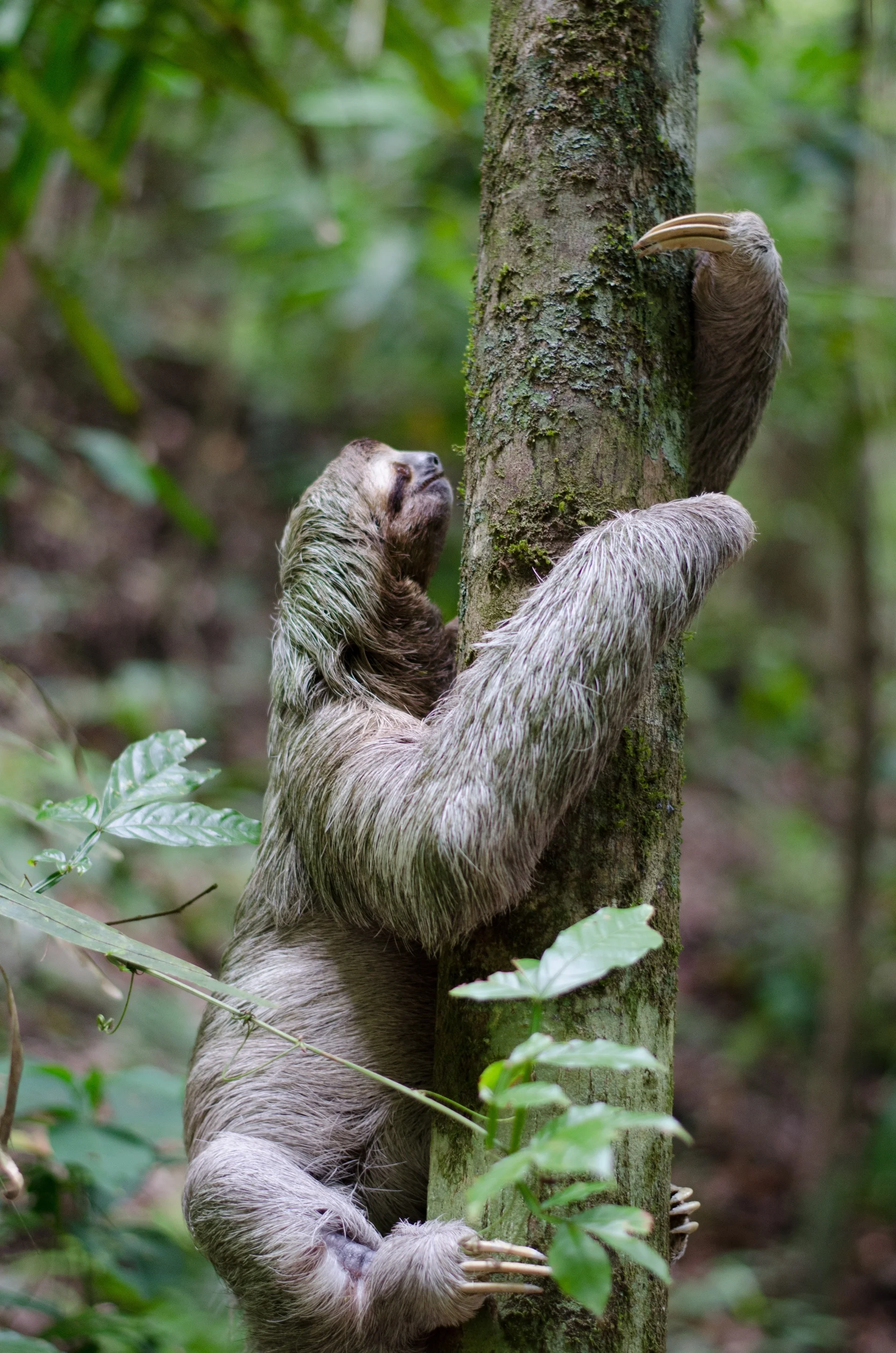Being a Sloth Has Its Perks, If You Like to Hang Upside-Down
According to National Geographic and the American Red Cross, the average human has around 2 gallons of blood in their body. Can you imagine what happens internally when you go upside down? Lucky for us, humans are not made to spend a lot of time hanging around from trees. Bats and sloths on the other hand are made for the upside-down lifestyle.
Bats both large and small do not have enough blood in their bodies for gravity to affect them while hanging upside-down. In fact, it’s actually easier for them to hang from a tree than it would be for a bat to sit upright. If you think about it, have you ever seen a bat sitting upright?
For sloths, it seems that a favorite way to photograph them is when they are hanging from the limbs of a tree but in reality, they are not upside-down as often as perceived. Also, when they are traveling through the rainforest by clinging from branch to branch it is at an incredibly slow rate. So slow, that their bodies are not fazed by being upside-down. Don Moore, the Associate Director at the Smithsonian National Zoo in Washington D.C, has said that the two-toed sloth does not move their head and keeps their nose level with the with the branch while traveling the forest. Doing so, ensures they do not get dizzy. The three-toed variety does the opposite and flips their head 180 degrees to watch where they are traveling.
Nature has made it possible for animals to do exactly what they were built for, whether it’s walking upright as a human, or hanging from a branch like a bat or sloth.
Resources:
http://news.nationalgeographic.com/2015/08/150829-animals-science-sloths-bats-health-biology/
http://www.redcrossblood.org/learn-about-blood/blood-facts-and-statistics




















